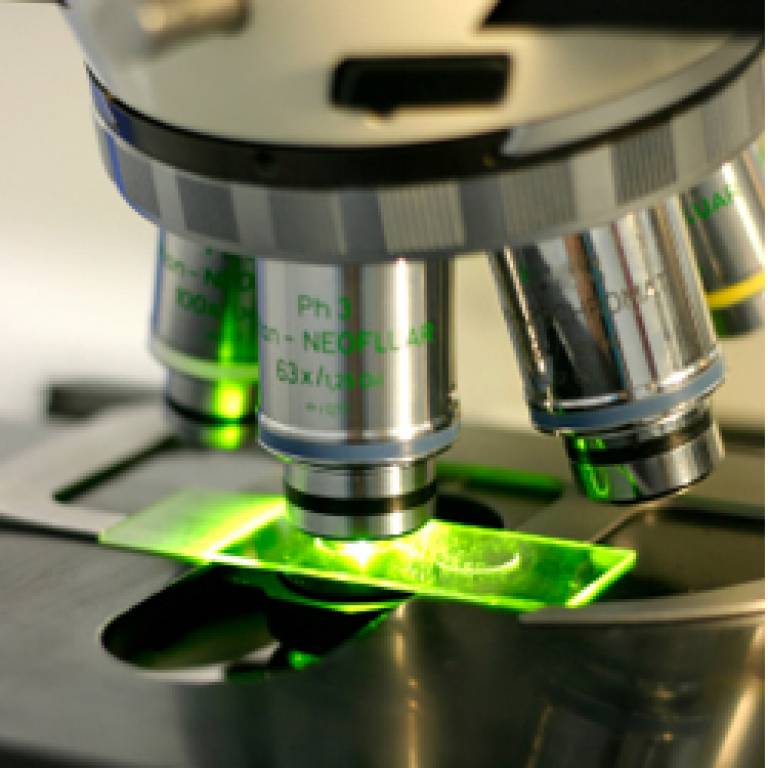UCL team finds new ways to improve cervical cancer screening
12 May 2010
UCL researchers have discovered a new screening method which could be much more effective for diagnosing cervical cancer.

The research, led by Dr Daniel Ndisang (UCL Institute of Child Health) and made possible by funding from the Association for International Research (AICR), could significantly reduce the death rate from the devastating disease.
Cervical cancer accounts for about one in 10 female cancer deaths worldwide each year. It is the second most common female cancer in the world. Screening can prevent around 75% of cases in women in developed countries.
The team found that a molecule called Brn-3a is present at high levels in both cervical cancer and pre-cancer lesions. These include the rarer types which are usually difficult to diagnose using the current screening procedures and therefore have lower survival rates. Brn-3a is known to switch on the molecule E6 which is found in the human papillomavirus (HPV), the main risk factor and a cause of cervical cancer.
These findings suggest that, by measuring the levels of both the Brn-3a and E6 molecules, more women with the early stages of cervical cancer could be diagnosed and treated, and more lives could be saved. Importantly, measuring these molecules would be cost effective and could therefore help reduce the deaths from cervical cancer across the globe.
Dr Ndisang said: "Across the world, half a million women are diagnosed with cervical cancer every year, most of them in developing countries. The best hope to save them is to have cheap and effective screening programmes. We hope this new technique might be the way to develop such programmes."
Dr Mark Matfield, Scientific Co-ordinator from AICR said: "This is a perfect example of why the type of basic cancer research we fund at AICR is so crucial. Dr Ndisang identified a molecule which is found at high levels in cervical cancer cells. Now, he has been able to show that it could be used in a new test which could diagnose cervical cancer at an early stage, when the chances of a complete cure are excellent."
Image above left: Human cells under microscope
UCL context
The UCL Institute of Child Health pursues an integrated, multidisciplinary approach to enhance understanding, diagnosis, therapy and prevention of childhood disease. A broad range of paediatric issues is covered, from molecular genetics to population health sciences. In partnership with Great Ormond Street Hospital, the Institute is the largest centre in Europe devoted to clinical and basic research and postgraduate teaching in children's health.
UCL Partners comprises five of London's biggest and best known hospitals and research centres: UCL, Great Ormond Street Hospital for Children NHS Trust (GOSH), Moorfields Eye Hospital NHS Foundation Trust, the Royal Free Hampstead NHS Trust and UCL Hospitals NHS Foundation Trust (UCLH).
It was designated as one of the UK's first academic health science centres by the Department of Health in March 2009 after a rigorous selection process, and brings together the combined skill and expertise of its clinicians and researchers to focus on the identified themes.
Related news
Mini-lecture: Seeing tumour treatment in a new light
Colorectal cancer incidence slashed through single screening test
UCL scientists discover 'traitor' human DNA helps viruses cause cancer
 Close
Close

